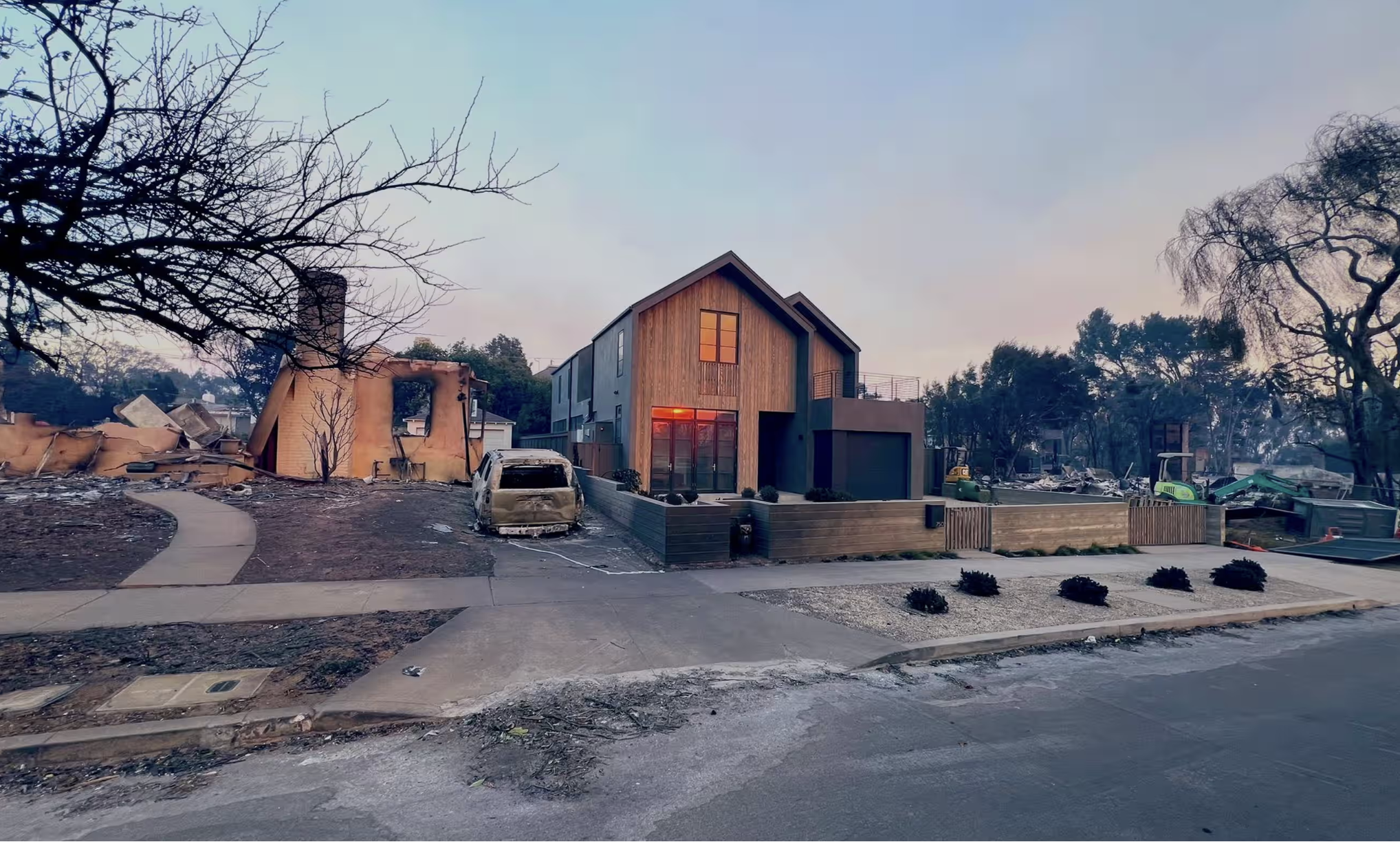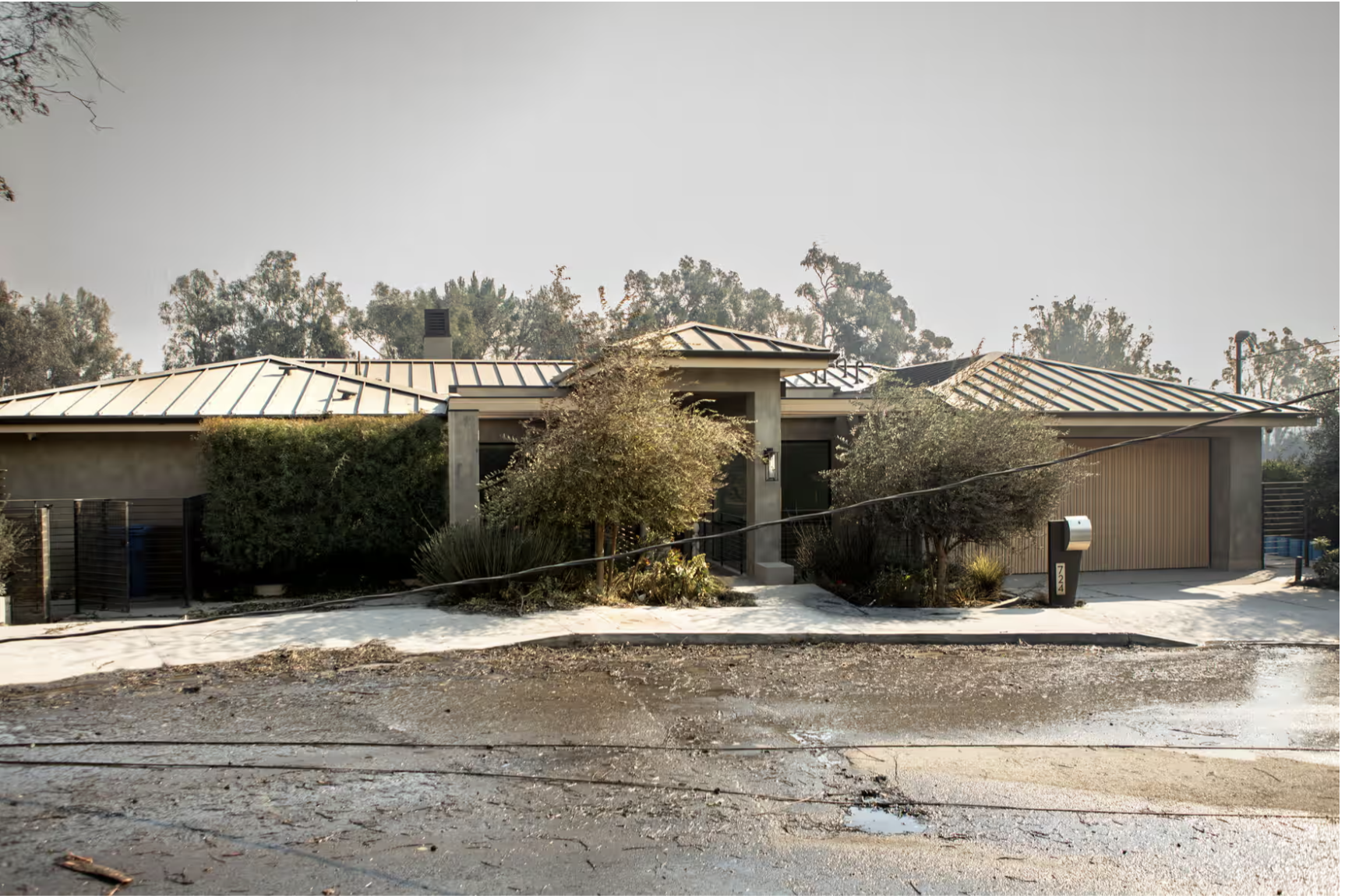Why We Need to Rethink How We Build Our Homes: Lessons from California's Fires
As I watched the recent fires tear through Los Angeles neighborhoods, I couldn't help but question something I've taken for granted my entire career: our reliance on wood in home construction. The sight of entire blocks reduced to ashes left me wondering why we're still building the way we did a century ago.
I get it – wood is as American as apple pie. When our country was growing in the 1800s and 1900s, we had forests as far as the eye could see, so wood became our go-to building material. Before we knew it, everything from our hardware stores to our construction crews was set up around wooden frames and two-by-fours. It's what we know, it's what we're comfortable with, and it's what we've always done.
But here's the reality: California's wildfires are becoming more frequent and intense, threatening more communities than ever before. Every year, we see the devastating impact of these fires on our neighborhoods, and it's clear that we need to adapt our building practices to this new reality.
My perspective on this changed dramatically during my travels abroad. I remember walking through neighborhoods in Mediterranean countries and noticing something striking: they often use different building materials and methods than we do in the United States. Instead of wood, many homes are built with materials like concrete and stone. While these construction methods might have a higher upfront cost, they offer significant advantages in terms of durability and fire resistance.
Over the past weeks, there have been discussions about different approaches to build more fire-resistant homes. Here are some points I have gathered:
Clever roof systems that can spray water during fires (like having your own firefighting system built right in);
Modern designs are moving toward sealed, highly insulated envelopes (which improves energy efficiency too). One major vulnerability is traditional attic vents and
open eaves, which can let burning embers sneak in and start fires from the inside;Metal mesh screens over vents and openings to prevent ember penetration;
Special windows that can withstand intense heat and and are less likely to shatter during a fire;
Non-combustible roof materials like clay tiles or metal roofing;
Natural insulation materials like mohair and sheep's wool that actually repel fire;
Strategic landscaping reates safety zones around homes. Consider installing a concrete perimeter wall – it acts like a fire break between your home and any nearby vegetation;
Homes perched on hillsides or nestled near canyons face higher risks during wildfires. If you're house hunting in fire-prone areas, factor this into your decision-making process.
The materials we choose matter enormously. While traditional wood-frame houses are vulnerable to fire, homes built with fire-resistant materials can provide crucial extra protection during a fire event. This additional time can make a significant difference in an emergency situation.
Give your trees a good trim and clear out underbrush regularly;
Replace vulnerable windows with tempered glass, especially on the sides most exposed to fire risk;
Choose fire-resistant landscaping (i.e. palm trees are highly flammable) and keep trees at a safe distance from your house.
For the best results, don't go it alone. Consulting with architects, landscape specialists, and fire mitigation experts can help you make informed choices about protecting your home.
Every time I drive through fire-affected areas in California, I think about how different things could be. We have the knowledge and tools we need to build safer homes – we just need to be willing to change our approach. I'm not saying we need to completely abandon wood construction overnight, but we do need to start thinking differently about how we build, especially in areas where fire risk is high.
The fires we're seeing aren't just natural disasters – they're a wake-up call. As someone who's dedicated their life to creating beautiful, livable spaces, I believe we have a responsibility to make them safer too. It's not just about building houses; it's about protecting homes and the families who live in them.
I know change isn't easy, especially in an industry as established as housing construction. But when I look at the increasing frequency of fires in our state, I'm convinced that changing how we build isn't just an option – it's a necessity. The real question isn't whether we can afford to build differently; it's whether we can afford not to. Stay safe.
Photo by Greg Chasen, Architect of a “passive home” ; vegetation-free zone around the yard fenced off by a solid concrete perimeter wall, a metal roof with a fire-resistant underlayment, a front-gabled design without multiple roof lines.





